As a manufacturer of billiard tables with over 20 years of experience at the source factory, I deeply understand the arduous process that beginners go through, from being confused and hitting randomly to gradually mastering the techniques. We have stumbled upon many pitfalls during our billiards learning journey and have also accumulated a great deal of experience. Today, I have sorted out the 10 most frequently asked questions by beginners and will share my understanding, hoping to help everyone avoid unnecessary detours.
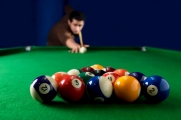
1. 1.Why do I feel that it’s easier to pocket the ball into the center pocket than the corner pocket?
Many beginners think that it’s easier to hit the center pocket, and I used to think the same way. In fact, this is most likely because the billiard table in the billiard hall is not standard, especially when the opening angle of the center pocket is too large, and the ball can easily roll in. Moreover, when hitting the center pocket, the force of the shot is generally small, so the probability of pocketing the ball is higher. However, on a standard billiard table used in official competitions, the center pocket is not that easy to hit. Even a slight deviation in the angle can easily lead to a miss. Therefore, unless it is absolutely necessary, players rarely attack the center pocket from a small angle.
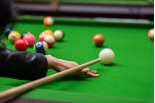
2. Why do I end up hitting a stop shot instead of a draw shot even though I follow what’s written in the book?
There are several key points for hitting a draw shot: First, when making the shot, your hand should be relaxed. Your wrist, palm, and fingers should not grip the cue tightly, but your shoulder should be stable. Many people seem to apply a lot of force, but because they grip the cue too tightly, the force is consumed before hitting the ball, and the force transmitted to the ball is insufficient, resulting in insufficient spin, and the draw shot turns into a stop shot. Only when your hand is relaxed can you fully transfer the force to the cue ball. Second, your hand and the cue should be level, and the cue should extend after hitting the ball. It should not stop as soon as it touches the cue ball. For beginners who haven’t been able to hit a draw shot yet, it is recommended to place the cue ball and the object ball closer together, about 5 – 7 centimeters apart. Hit a low shot, and stop the cue as soon as the tip touches the cue ball. This way, you can see the effect of the draw shot and practice several times to get the feel. However, this is just the beginning, and there is still more to learn later.

3. Why is the effect of my draw shot not good, and the cue ball only draws back a short distance?
This involves the extension of the cue. Simply put, the tip of the cue should not stop as soon as it touches the cue ball, but should extend forward for an appropriate distance. When the force and speed of the shot are fixed, the longer the extension, the more obvious the draw shot effect. Just as some textbooks say, you should have the feeling of hitting through the cue ball. Some beginners tend to make the shot crooked during the extension. Here is a little trick: place the bridge hand closer to the cue ball when hitting a draw shot, which can improve the problem of a crooked shot.
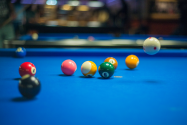
4. Is “Great force brings miracles” correct? Can you hit the ball too hard?
The saying “Great force brings miracles” is correct in a certain context. For example, on a 16-color billiard table, where the pockets are large and the table is small, hitting the ball with great force does have a certain probability of pocketing the ball. But on a snooker table, it doesn’t work. The pockets on a snooker table are small and the table is large. Hitting the ball with brute force will only lead to a series of misses and ultimately losing the game. Therefore, you should not hit the ball blindly with force. You need to control the force according to different billiard tables and situations.
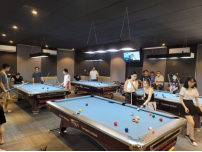
5. I hit the ball with great force, but why does the cue ball only move forward a few centimeters?
The main reason is that the shot is unstable. Maybe you aimed for a high shot, but it actually became a medium shot at the moment of making the shot; also, the tip of the cue did not extend and stopped as soon as it touched the cue ball; in addition, a hand that is not relaxed will also have an impact. These factors result in not achieving the normal forward spin effect (follow), but instead achieving the stop shot effect (stun). To solve this problem, you need to pay attention to the stability and standardization of the shot and keep your hand relaxed.
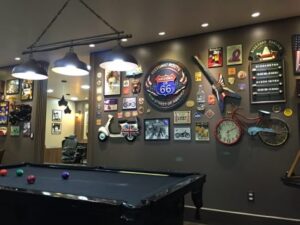
6. When hitting a ball near the far corner pocket with a relatively small angle, why does the cue ball stop after rebounding from the cushion when using a high shot?
After hitting the ball with a strong high shot, the cue ball will have a braking effect after rebounding from the cushion, so it only rebounds a short distance and then stops. If you want the cue ball to rebound smoothly after hitting the cushion, it is recommended to use a medium-high shot and gently push the ball instead of using a lot of force. In this way, the cue ball will rebound as expected.
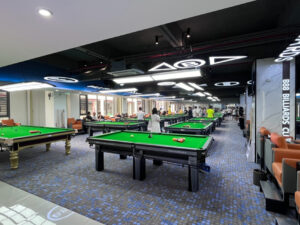
7. When playing billiards, it is said that you should relax. How exactly should you relax?
Relaxing doesn’t mean that you should be completely limp and weak. Some beginners can’t relax when playing billiards, and the problem may lie in their stance. For example, some people almost lie on the billiard table, and their arms bear too much of the body weight, so they definitely can’t relax. The correct posture is to place all the body weight on the supporting leg, and the arm used for the bridge can float above the billiard table without touching it. After getting into the correct stance, then consider relaxing your hand. The rear shoulder should be fixed, and use the elbow as the axis to let the forearm swing back and forth like a fan. The wrist should be relaxed but not twisted randomly, and should be fixed. In fact, when holding the cue, your fingers are actually supporting the cue. The ring finger and little finger can hold it loosely or even not touch the cue.

8. Should I use left English or right English when playing billiards, and how do I use it?
As a beginner, don’t consider using English for now. If you can’t even ensure that you won’t miss the shot without using spin within half of the table, then first practice playing half-table shots without using spin. After you have mastered this, then study using English. Because English is a technique commonly used by professional players, it is quite difficult for beginners. Forcing yourself to use English too early will instead affect your progress. Even though I can hit a short-distance curved ball to bypass obstacles and use spin to make the cue ball draw back and change direction after hitting the cushion, in actual competitions, the opportunities to use these techniques are not many, because these techniques are not stable, and it is difficult to use them well without a certain level of skill. Therefore, beginners should first solidly practice pushing the ball with a center shot.

9. Is the essence of snooker accuracy?
The essence of snooker is not accuracy, but force. I’m not the one saying this; it’s Davis. The force here doesn’t refer to brute force, but rather the precise control of force, being able to control the cue ball to reach any desired position. It can’t be a bit more or a bit less, and the cue ball should stop exactly where it should be. When watching top players play snooker, the shots they make seem not difficult at all. They are just basic pushes. After hitting the cushion once and then pushing again, moving left and right, they finish all the shots. But their cue ball can always stop precisely at the position where it should be. This is the super control ability over the cue ball and also the essence of snooker.
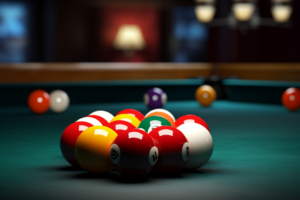
10. How do I practice snooker?
There are many textbooks on snooker practice. I would like to add two points: First, practice hitting the black ball at the original position from different angles and pocketing it into the left and right corner pockets. Practicing this more can greatly improve your ability to hit the black ball and also put a lot of psychological pressure on your opponent when playing with friends. Second, place the cue ball on the break line and push the 5-point ball into the corner pocket over a long distance in a straight line. This practice is of great reference value for monitoring whether your cueing and force application posture is standard. For example, Hendry would practice pushing the 5-point ball like this before a game, and he could do it without missing for more than twenty minutes. The focus and strength of top players are really admirable.
Choose direct sales from the source manufacturer and enjoy truly high-quality products at reasonable prices. We directly connect with you, eliminating intermediate costs, allowing you to spend the least amount of money to buy the best products.https://www.tiktok.com/@spk.billiard?_t=8qRRRnXP4N8&_r=1
